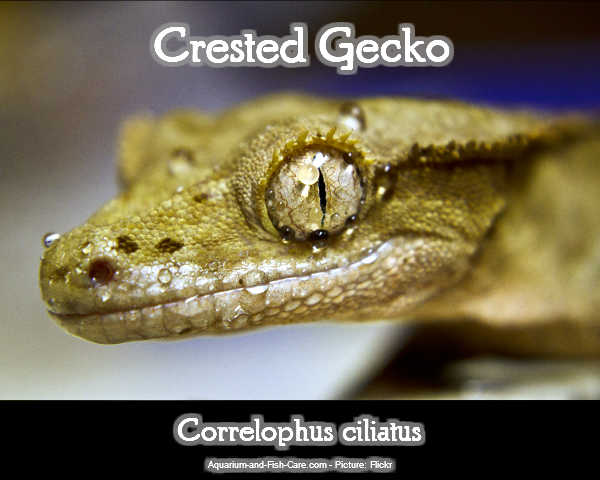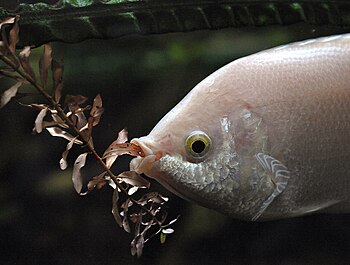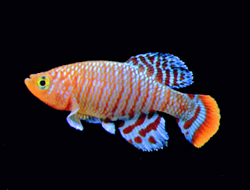Anchor worms are another external parasites that often affects goldfish and other types of fish that is quite common. Anchor worms often referred to as Lernaea cyprinacea, a common copepod parasite which is small crustaceans. These parasites are mostly found in pond raised fish but if left untreated they can cause serious damage to your fish not only in the population of parasites but the secondary bacterial infections that can arise as well after the parasites attach themselves to the body of the goldfish.
What happens is that they pierce the body feeding on tissue and fluids that cause more bacterial infections to set in. The good news is that it’s not very hard to learn how to treat anchors worms on goldfish or any other type of fish in fact. These parasites are very treatable as there are many treatment medications on the market today to choose from. Here I will show you many different ways on how to treat your goldfish for anchor worms.
What happens is that they pierce the body feeding on tissue and fluids that cause more bacterial infections to set in. The good news is that it’s not very hard to learn how to treat anchors worms on goldfish or any other type of fish in fact. These parasites are very treatable as there are many treatment medications on the market today to choose from. Here I will show you many different ways on how to treat your goldfish for anchor worms.
Removing Anchor Worms with Tweezers
This method of treatment for anchor worms is not one that I will suggest people use. You will, however, be able to see these worms found on your goldfish as they are like small green hair like parasites seen attached to your goldfish. They are quite easily seen and can be removed with tweezers but the only thing wrong with this method is you don’t see all the small worms that could be attached to the goldfish already which are beginning to grow. Anchor worms start off small that end up turning into larger worms as they begin to feed on the body fluid of the goldfish which then you will see later on without a microscope. This method may work but you will never know if they reproduced in your tank or pond and are just waiting to find a new host.
Anchor Worm Treatment Medication
In order to know for sure, you have rid yourself of anchor worms once and for all people should strongly use fish medication to eliminate these external parasites. There are many types of fish medications on the market and here are just a few people can choose: Anchors Away, Dimilin, Proform LA, and Potassium Permanganate. These anchor worm treatment medications work great and will eliminate the parasites affecting your fish.
Anchors Away
To treat your fish using anchors away make sure you always follow the manufacturers recommended dosage. Here is how you treat your fish using this medication:
1. Perform a 25% water change before treatments.
2. Always make sure you remove the activated carbon from your filter.
3. Add one teaspoon for every 40 gallons
4. Treat every 6 days for up to 3 weeks
Anchors away is a great product and effective at eliminating anchor worms and other parasites as well. You will notice after the first week of treatment that they will be falling off your goldfish.
Dimilin
Dimilin is another great product on the market that will treat fish suffering from anchor worms. Here is how you treat your goldfish for anchor worms using Dimilin:
1. Shake bottle very well before use.
2. Remove activated carbon.
3. Add 1 tablespoon for every 60 gallons
4. Wait 14 days to see if anchor worms are completely gone
5. If not, repeat dosage again and do not do a water change.
6. After second treatment is complete, wait another 14 days to make sure parasites are eliminated then perform a water change removing some of the chemicals.
Proform LA
This is one of the best forms of treatment for anchor worms and fish lice on the market. It is really safe for humans to use and is a very low maintenance method of treatment. What’s great about Proform LA is that it can be used in any water temperature where some can only be used as low as 50 degrees Fahrenheit. You can do three treatments one week apart and it’s a fairly low-cost medication to use as 1 pint will treat 5000 gallons and 1 quart will treat 10,000 gallons of water. This anchor worm medication will not harm turtles, frogs or snails. Follow recommended dosage
Potassium Permanganate
This method of treatment should only be used by experienced fish keepers. This is a very strong medication that if done improperly will kill all your fish. Beware this can cure your goldfish or other fish from anchor worms but it can easily kill them too. With any medication that you use people should always use extreme caution wearing eye goggles, long sleeve clothes, and a face mask when possible. Never inhale by these medications and always work in a well-ventilated area. The slightest small crystal of potassium permanganate if it got into your eye can cause severe irritation and possible blindness. So please be careful when working with any form of medication. Again this form of medication should only be used by qualified people as other forms are easier to use and less risky. Here is how you treat with potassium permanganate:
1. Make sure you bypass your filter and shut off your UV sterilizer before treatment.
2. Make sure aeration is at top level.
3. Wear necessary protective equipment before adding treatment
4. Add 1 gram per 100 gallons or 1 teaspoon for every 600 gallons of water.
5. Wait till water turns brown
6. Add 1 pint of hydrogen peroxide per 1000 gallons. This will clear your water in not time and replenish oxygen to your water.
7. Turn on your filter again and UV sterilizer.
This method should be done up to three times to make sure you have eliminated all anchor worms and any other parasites that may be in the water. When you add hydrogen peroxide to the water it removes all effectiveness of the potassium permanganate. So in case of overdosage simply add hydrogen peroxide and your fish will be okay. Wait about 3 days before repeating treatment as the hydrogen peroxide may still be in the water making a new treatment ineffective. After 3 days you should be good to go for another treatment.
Now here I have covered several different ways at treating goldfish for anchor worms. Each medication is different and some are easier to use than others. Just make sure you use the one that you feel more comfortable with. Each of these above methods of anchor worm treatment will work. Just follow the manufacturers recommended dosage and your fish will soon be free of anchor worms.
By Jamie Boyle
Jamie Boyle is an online author who writes and maintains his Goldfish Care Information (http://www.GoldfishCareInformation.com) blog to help people answer questions involving goldfish. If you need more information on goldfish and want to know how to treat various goldfish diseases please visit http://www.GoldfishCareInformation.com
Article Source: EzineArticles
|






